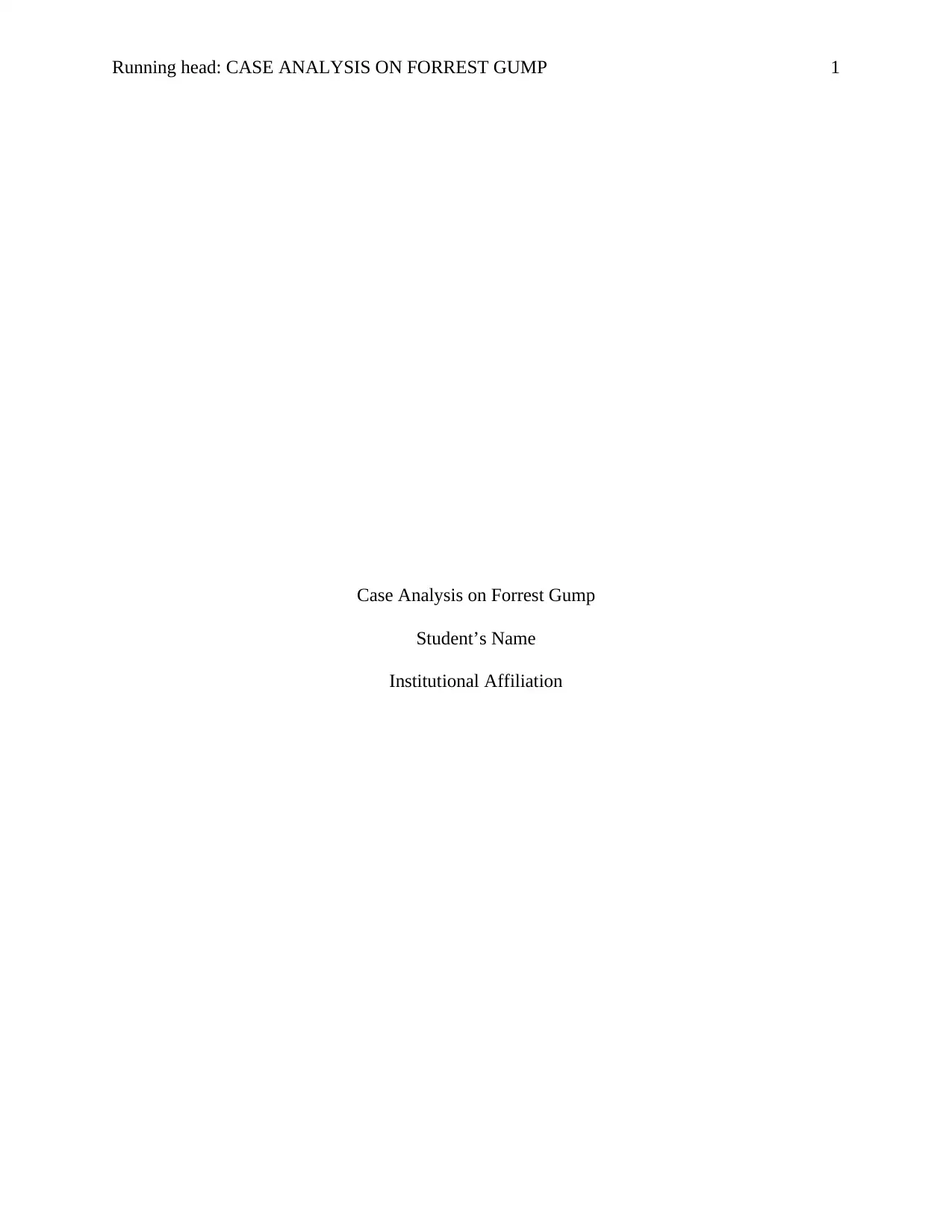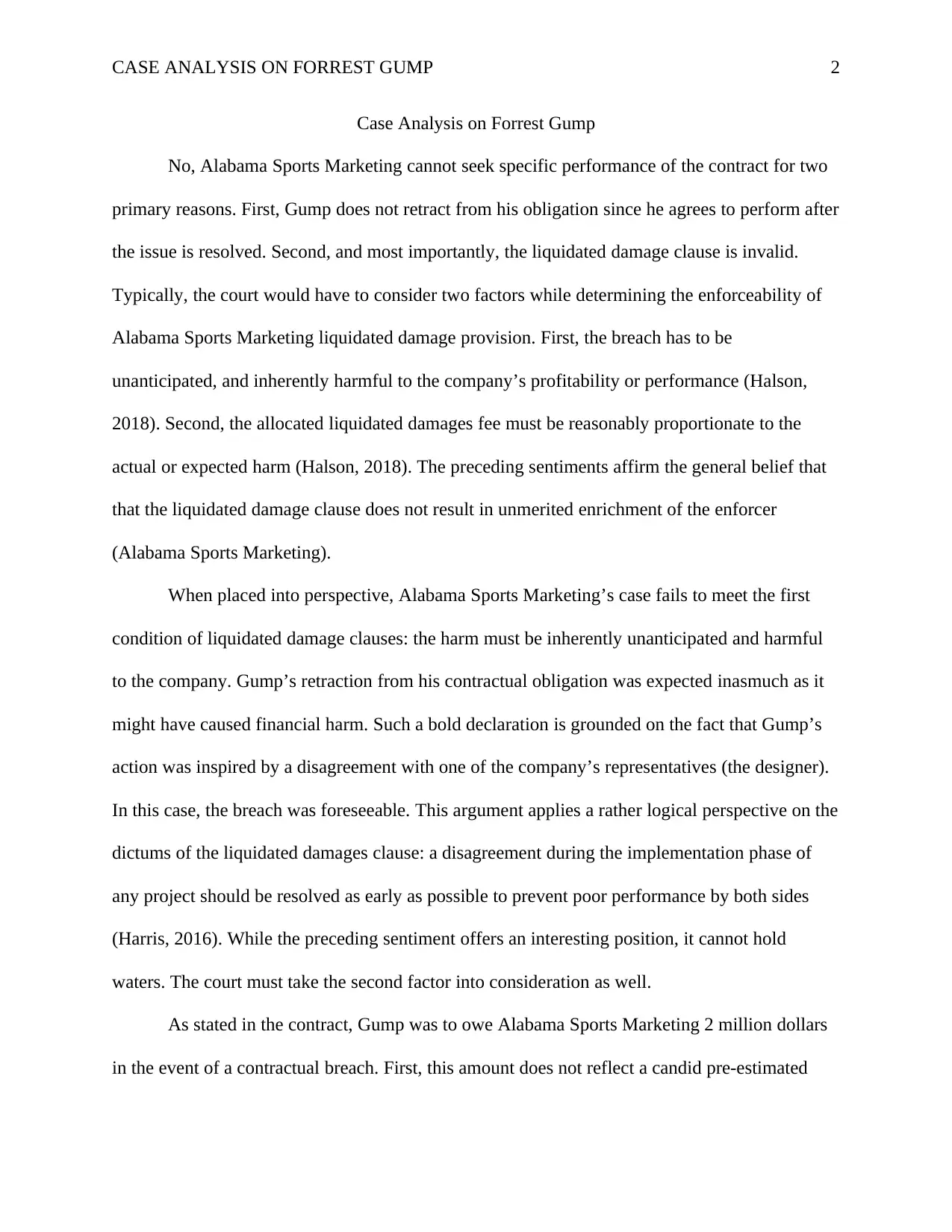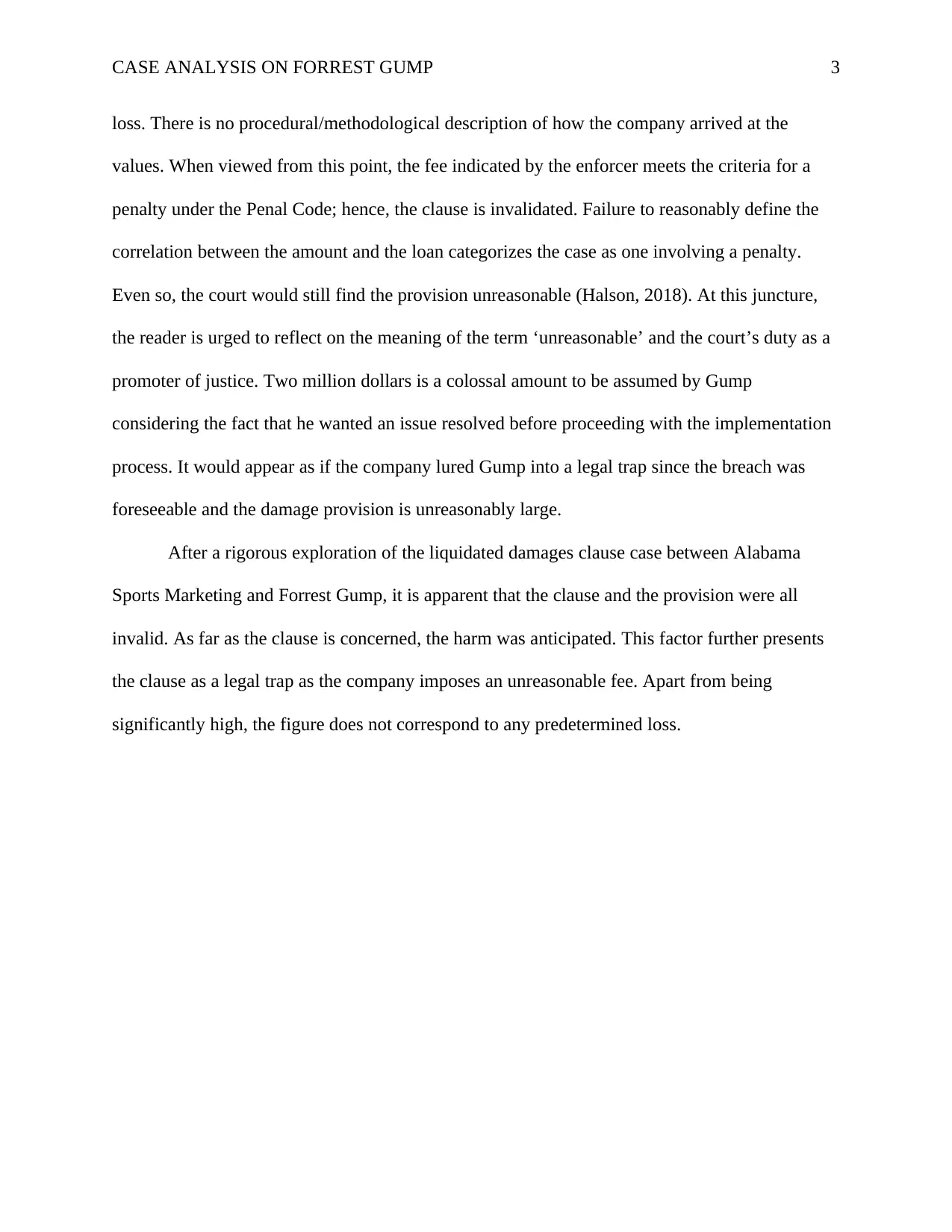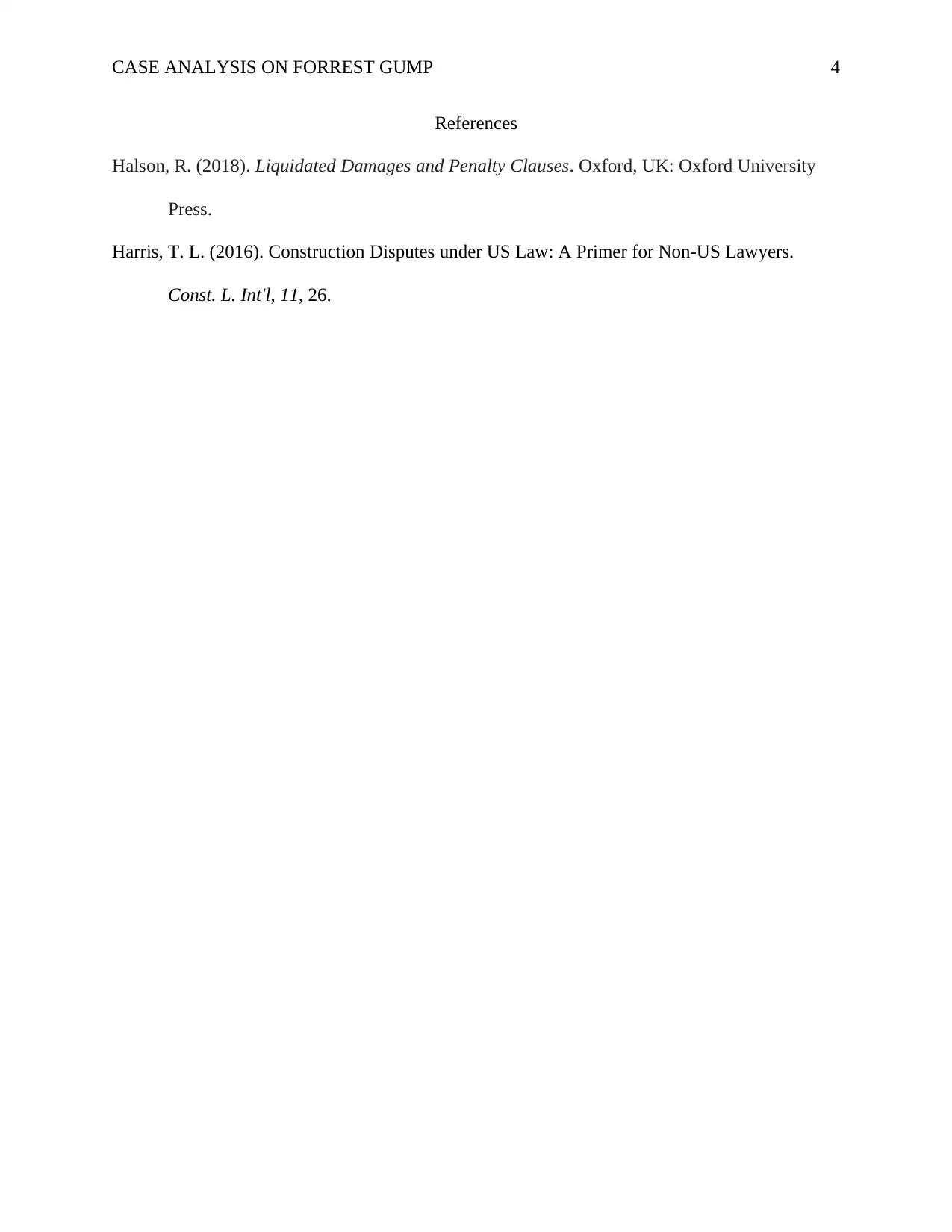Forrest Gump Case Study: Specific Performance & Contractual Breach
VerifiedAdded on 2023/05/28
|4
|693
|123
Case Study
AI Summary
This case study analyzes whether Alabama Sports Marketing can seek specific performance of a contract with Forrest Gump. The analysis argues against specific performance, primarily because Gump agrees to perform after resolving the issue and the liquidated damage clause is deemed invalid. The court typically assesses the enforceability of such clauses based on whether the breach was unanticipated and inherently harmful, and whether the damages are proportionate to the expected harm. In this case, Gump's retraction was foreseeable due to a disagreement with a company representative. Furthermore, the $2 million liquidated damages fee is considered unreasonable and akin to a penalty, as it lacks a clear correlation to any pre-estimated loss. The study concludes that the liquidated damages clause is invalid, presenting it as a potential legal trap due to the foreseeable breach and the unreasonably high fee, which does not reflect a candid pre-estimated loss.
1 out of 4





![[object Object]](/_next/static/media/star-bottom.7253800d.svg)